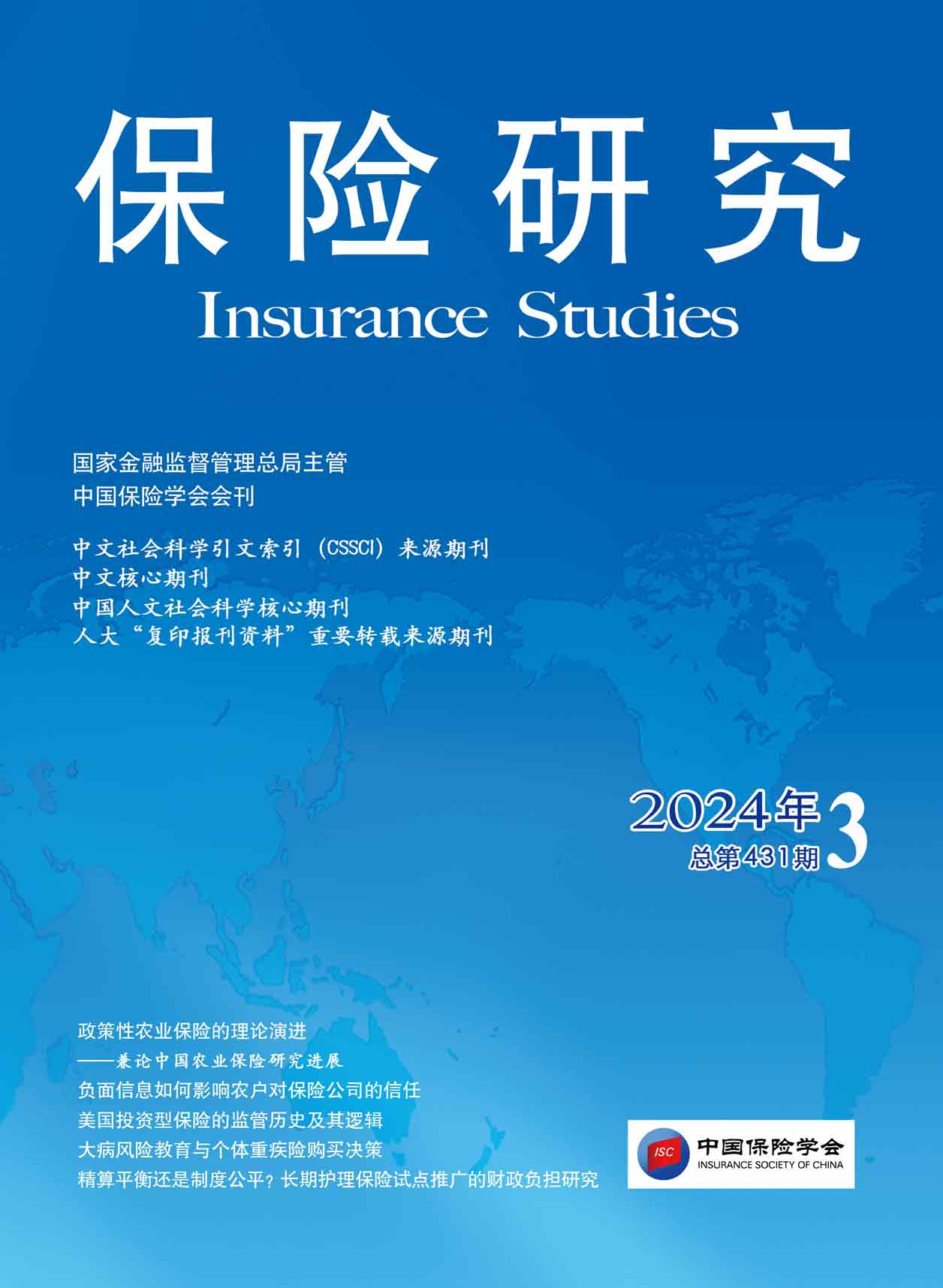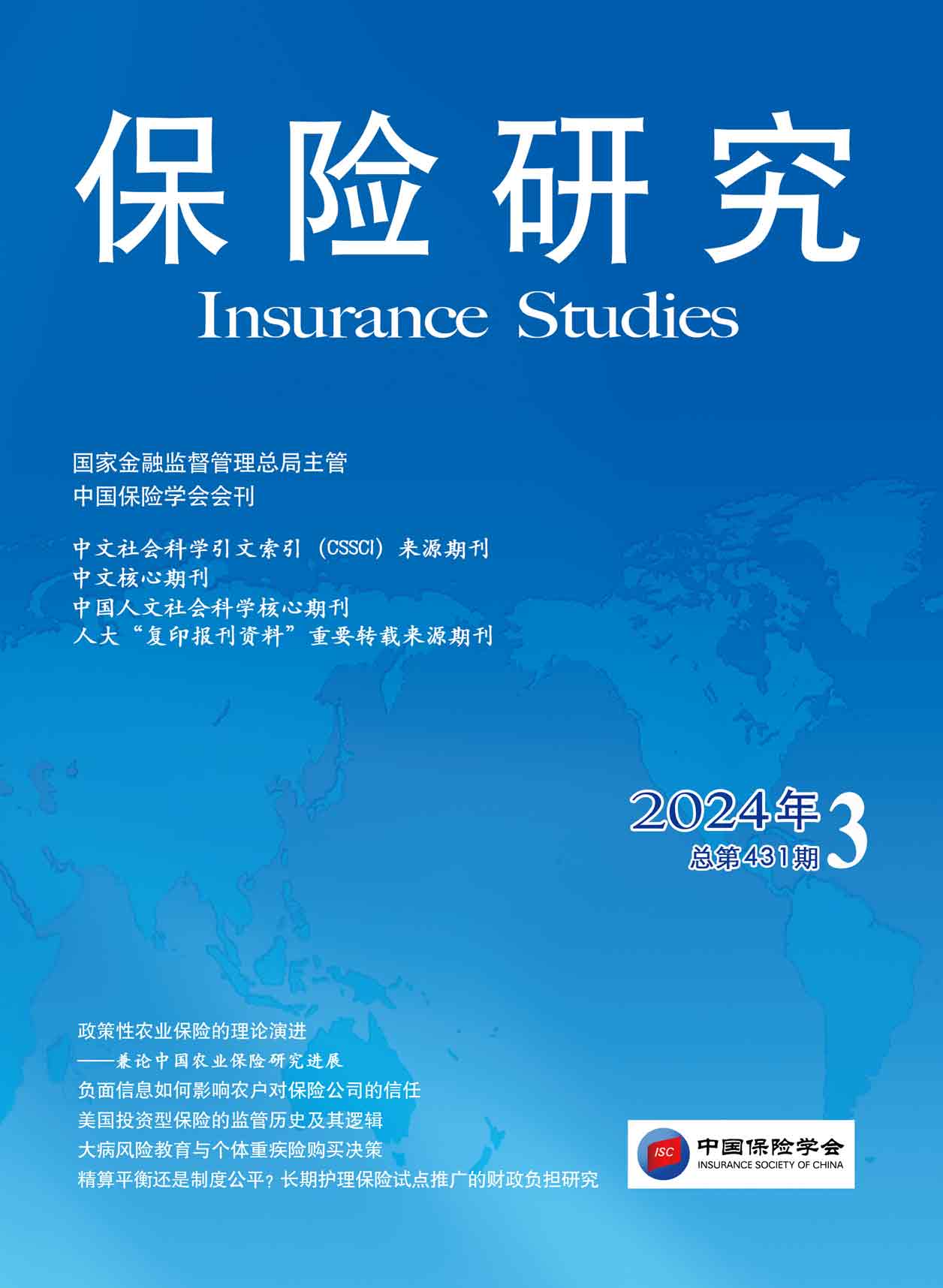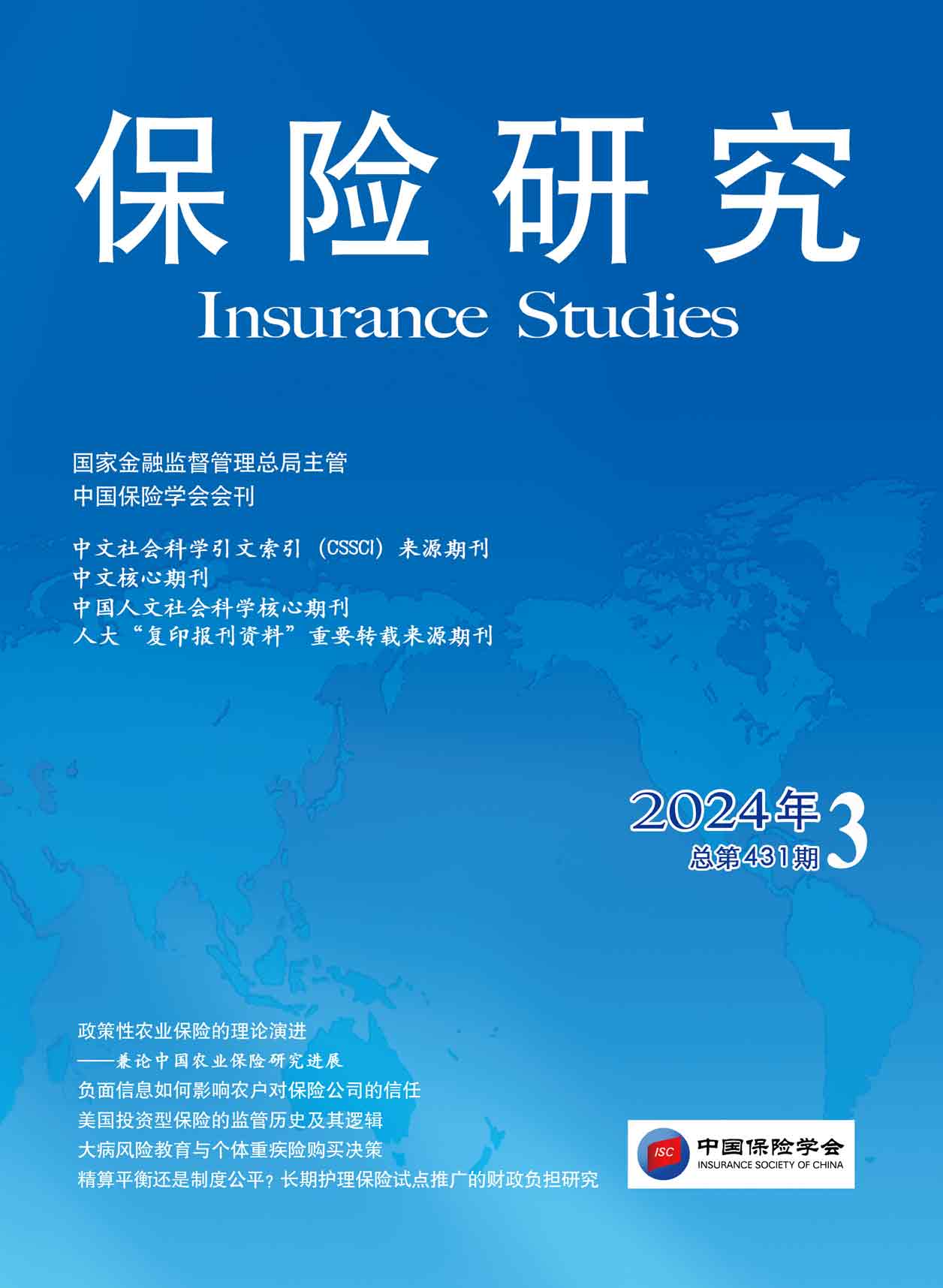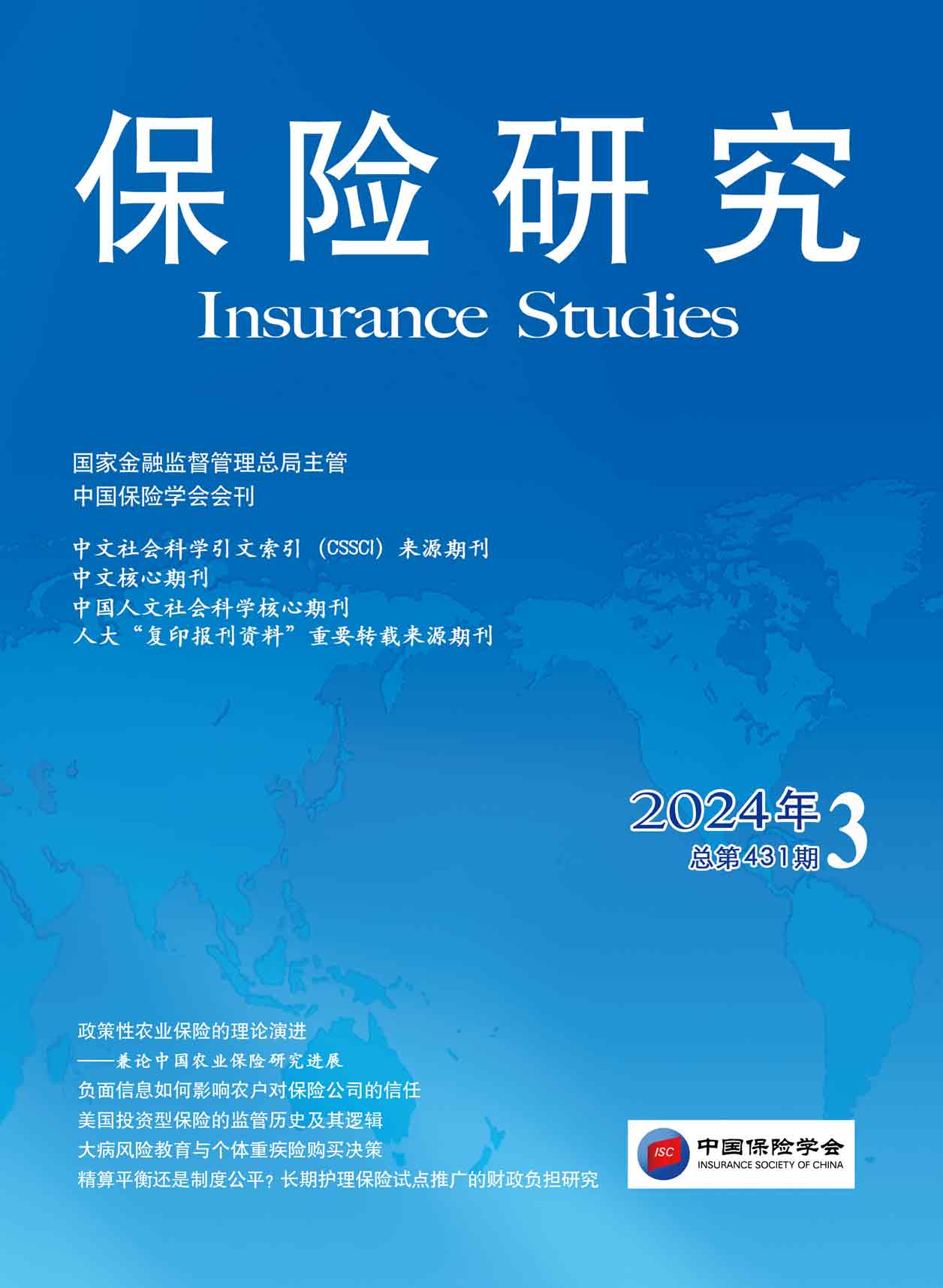
《保险研究》20240308-《个人养老金需求不足之谜:基于个人流动性短缺视角的解释》(蓝浩歌、赵桂芹)
[中图分类号]F842.6[文献标识码]A[文章编号]1004-3306(2024)03-0100-16 DOI:10.13497/j.cnki.is.2024.03.008
资源价格:30积分
- 内容介绍
[摘 要]推动第三支柱中个人养老金制度发展,是我国积极应对人口老龄化的重要手段。然而现阶段,个人养老金制度发展仍因市场需求不足面临巨大挑战。本文基于多元累积前景理论,建立个人在流动性短缺风险和长寿风险下的个人养老金主观效用模型,结合个人养老金税收优惠精算模型,通过数值模拟方法测算对个人养老金的实际需求,分析税收递延政策对个人养老金计划参与决策的影响,以探讨不同养老安排下对个人养老金的实际需求,以及不同个人所得税边际税率下个人养老金税收优惠模式的选择。研究发现,当个人非完全理性时,个人养老金计划通过增加工作期和降低老年期流动性风险,使个人养老金的净现值与主观效用产生偏差,从而影响个人养老金计划参与决策;只有对重视老年期效用的个人,个人养老金税延政策才能实现有效激励,并且个人所得税边际税率越高、投资收益率越高,激励效果越明显,存在一个最优年缴费额使得个人养老金的主观总效用达到最大。进一步分析表明,个人养老金年金化下的主观总效用比自我养老安排下的主观总效用更高,且年缴费额越高,两者的差距越大;在相同个人所得税边际税率下,EET1、EET2和EEE模式的个人养老金净现值和主观总效用依次增加,当个人所得税边际税率超过3%时,这三种模式的主观总效用均大于TEE模式。
[关键词]个人养老金;多元累积前景理论;税收优惠模式
[基金项目]国家自然科学基金面上项目(71973089);上海财经大学研究生创新基金(CXJJ-2023-321)。
[作者简介]蓝浩歌,上海财经大学金融学院博士研究生;赵桂芹(通讯作者),上海财经大学金融学院副教授、博士生导师。
The Puzzle of Insufficient Demands for Personal Pension: An Explanation from the Perspective of Individual Liquidity Shortage
LAN Hao-ge,ZHAO Gui-qin
Abstract:Promoting the development of individual pensions in the third pillar is a major means for China to actively deal with the aging population.However,the development of individual pensions is still facing great challenges due to insufficient market demands at this stage.Based on the theory of multivariate cumulative prospects,this paper constructs the subjective utility model of individual pensions under the risks of liquidity shortage and longevity.And combined with the tax preference actuarial model,it calculates the actual demands of individual pensions through numerical simulation methods,and analyzes the influence of tax-deferred policy on individual pension participation.The paper further discusses the actual demands for individual pensions under different pension arrangements and the selection of tax incentives under different marginal tax rates.It is found that when individuals are not completely rational,the net present value of the personal pension will deviate from the subjective utility by increasing the liquidity risk in the working period and reducing the liquidity risk in old age,thus affecting the participation decision on individual pension.Only individuals who pay attention to the utility in old age can realize effective incentives,and the higher the marginal tax rate and the rate of return on investment,the more obvious the incentive effect,and there is an optimal annual contribution to maximize the subjective utility.Further analysis shows that the subjective utility under the annuity arrangement is higher than that under the self-pension arrangement,and the higher the annual contribution,the greater the gap between them.Under the same marginal tax rate,the net present value and subjective utility of individual pensions of ETT,EET,and EEE policies increase successively.When the personal marginal tax rate exceeds 3%,the subjective total utility of these three policies is greater than that of the TEE policy.
Key words:individual pension;multivariate cumulative prospect theory;preferential tax policy

《保险研究》20240301-《政策性农业保险的理论演进——兼论中国农业保险研究进展》(易福金、燕菲儿、杨柳)

《保险研究》20240302-《负面信息如何影响农户对保险公司的信任》(张跃华、阎文溯、Calum G.Turvey)

《保险研究》20240303-《专利保险试点政策与企业数字化转型》(向海凌、陈佳盈、吴非)

《保险研究》20240304-《美国投资型保险的监管历史及其逻辑》(李敏)

《保险研究》20240305-《大病风险教育与个体重疾险购买决策》(李天一、刘璐、王正位、沈鹏)

《保险研究》20240306-《挤入还是挤出:基本医疗卫生服务影响商业健康险消费效应分析》(邢晓卫、匡贤明)
